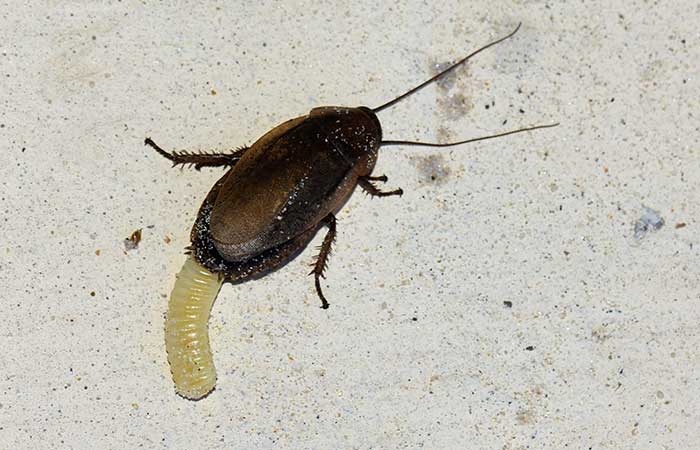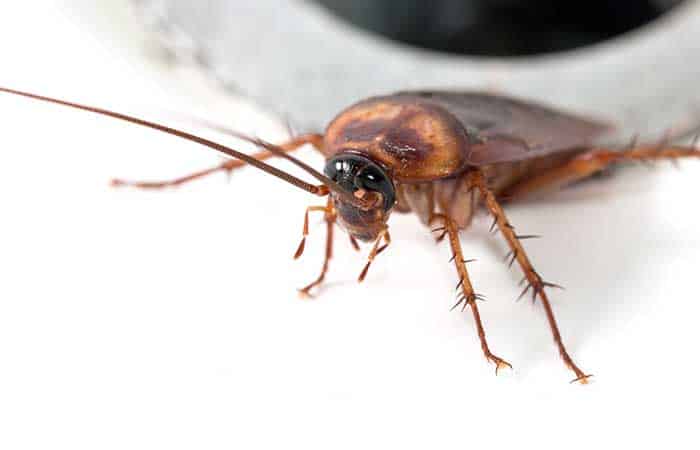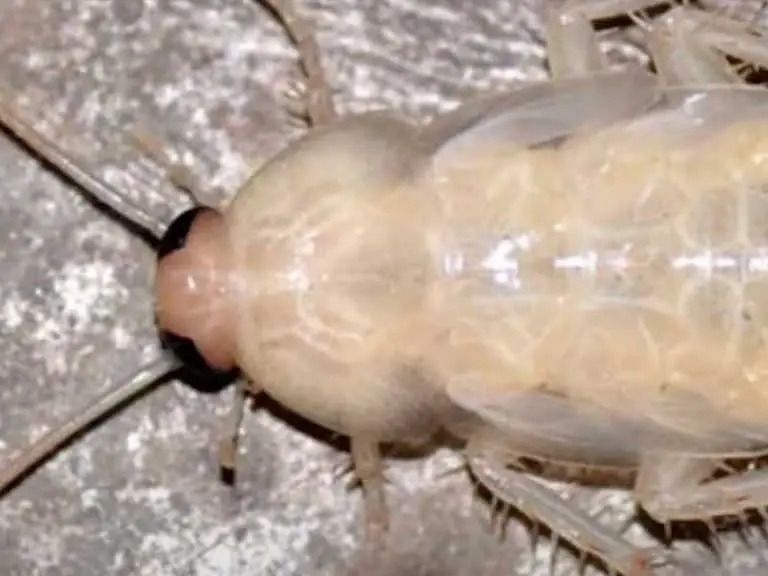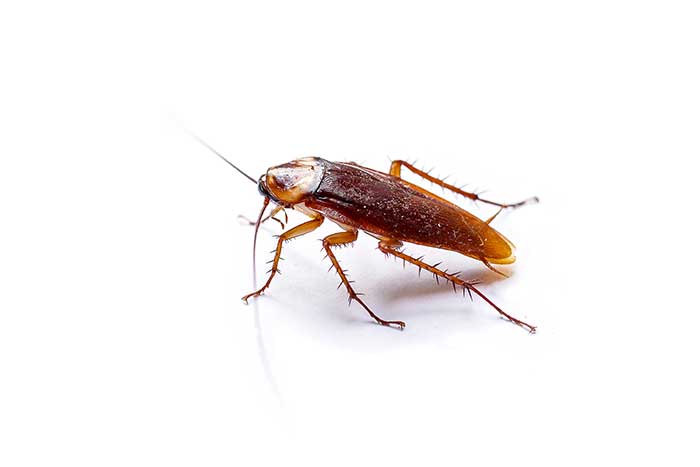Do Cockroaches Play Dead?
Cockroaches have the ability to thrive in almost any scenario, which is what enables them to flourish all throughout the world. However, cockroaches have many predators, some looking for their next meal and some (us humans) just trying to remove them from an environment they are not welcome in.
Can cockroaches play dead when being threatened by a predator or humans? Yes, they certainly can! And it’s a common tactic they use when the threat is serious. When in a dangerous situation, they can remain dormant for up to one hour before it is safe to resume movement.
When they believe they are safe, they will spring up and flee. Cockroaches have tiny sensors on their backs that resemble microscopic hairs under a microscope. They can detect changes in the wind from any creature that moves around giving them an exceptional ability to measure the danger in the environment.
Where Might You Find a Roach Playing Dead?
Cockroaches are nocturnal insects that hide during the day in dark, cramped, warm locations like basements, behind kitchen worktops, underneath refrigerators, beds, and cupboards. They emerge at night seeking food.
They are most likely to play dead in your home or other areas where they can be alone without feeling threatened. They do not particularly fear humans, but if they feel that there is danger present, they will play dead to avoid being detected.
You may come across one in a kitchen cupboard or a basement area of your home, if you corner these critters or they feel like there is no escape, playing dead will be a possible option for them.
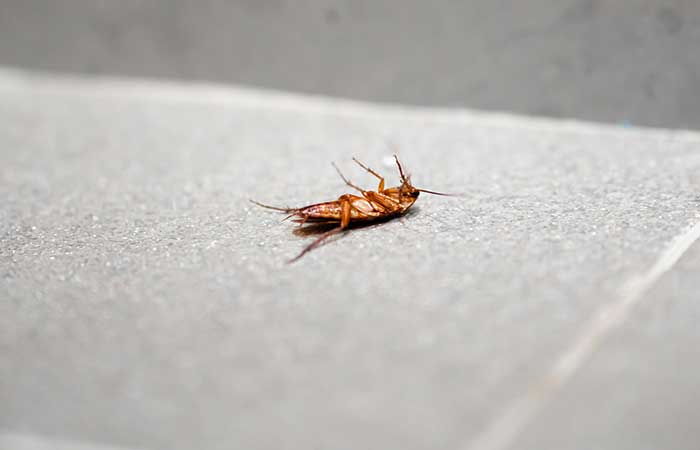
Other household dangers like cats and dogs may harass a cockroach or even play with it (in an aggressive way) so you may find a cockroach playing dead in any part of your home that has been moved there by your pets. They may also play dead when they feel threatened by chemicals in their environment or if weather conditions change drastically.
Because cockroaches are nocturnal insects that live in dark places, they are not very likely to be seen during the day. However, if they appear during the day, it might indicate an infestation of cockroaches at home and one should look immediately at some cockroach elimination methods.
Is The Cockroach Dead, or Playing Dead?
There may be other reasons for a cockroach seemingly playing dead. These could be one of the following:
Cold Temperatures
They prefer warmer climates but a sudden change in temperature could cause them to go into a state of torpor until conditions change. They could be slowly dying from cold weather, which causes the cockroach to slow down and shut down as it tries to conserve energy. The optimal temperature for an average cockroach life is 75°F and 85°F. They become significantly slower at 60°F and at around 40°C, they are unable to move so will be deprived of food and water.
A temperature in the low range that cockroaches are not used to could be the cause of them not moving. They may not be dead but just close to death.
Injured
If a cockroach has suffered an injury, it may not be able to move or go into a state of torpor, in order to reduce blood loss and save energy. If it has an injury on its leg or if it’s missing an antenna, it may not be able to escape predators effectively and may stop moving as well.
A cockroach may not be able to escape a predator while injured and will eventually die if it is attacked a few times by a larger animal.
If you spot a cockroach playing dead which has injuries such as missing legs then it may well be close to death and has given up the fight. However, a cockroach can grow back a leg if it is lost so it would be wise to dispose of the cockroach to prevent this from happening.
It’s Actually Dead
Cockroaches are very durable and can stay alive for a long time even when they suffer a serious injury. A cockroach may be playing dead but it could actually have been killed by your family pet or from another pest in your home.
How To Identify a Cockroach Playing Dead
To avoid being fooled by clever bugs, keep your eyes open and pay attention to a roach’s physical actions. This will assist you in determining whether or not a roach is truly dead or just deceiving you. Nudge the cockroach a few times to see if it moves.
Use a pen or pencil to lightly touch the cockroach’s body or limbs. The cockroach’s limbs will be stimulated and move when touched. It is strongly advised not to use unprotected fingers to touch a cockroach as they can carry diseases, and it’s also a horrible sensation to touch them!
If a cockroach has been killed, its antennae will be powerless to move about since it will be unable to detect anything. Roaches’ antennae will twitch occasionally while they search for signs that the danger has passed.
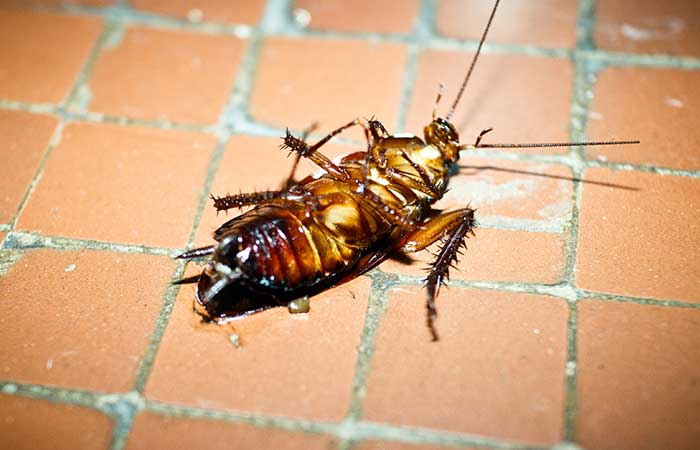
The roach’s antennae are meant for detecting sounds and scents. This assists the insect in determining when it is time to get up and pursue after playing dead for a while. The bug will move its antennae every three to five minutes. It doesn’t need to look at you because those sensitive detectors are enough for it to be aware that you are around.
In most situations, roaches that appear to be dead will have their legs positioned in a ready-to-act posture. Those will look like they are spread from the body and may easily grab on something. If you pull its legs, it will return to its original position with a firm feeling to them.
A dead roach will have folded legs that are lifeless, whereas a living roach can tell from how relaxed it is resting against its body. Even if you separate them, there will be no resistance compared to those who are playing dead.
If the cockroach is playing dead, you should still be able to see its legs twitch every once in a while. If this doesn’t happen or if its antennae are flat against its body, it has probably died.
If this is the case and the cockroach has been dead for some time, you will know straight away due to the smell! Dead cockroaches smell terrible and can be smelt for some time after death.
The Insecticide Effect
If you spot a cockroach that isn’t moving or on its back, there may be a possibility it has been affected by insecticides administered by yourself, a pest control professional, or a neighbor.
Insecticides have varying degrees of effectiveness, depending on their strength and brand. Some strong poisons may kill a cockroach immediately, some stun them for a short time and some will have no effect whatsoever because the cockroaches have evolved to cope with them.
If an insecticide is not used properly or is of low strength, it may have an effect on a cockroach of playing dead, but in fact, it has just been stunned and can’t move.
This can make the roaches flip upside down and lie motionless. It may recover and flip back on its front then scurry off, or it may be starved to death in this position.
Cockroaches can survive for a week or more after being exposed to pesticides, according to certain studies. If the pesticide is powerful, or if the roach has a strong immune system, it might take anything from a few hours to several days for it to die.
Their biggest threat from a non-life-threatening poison for a cockroach is the fact that they could be stunned and can’t get access to water or food.
Be aware of any neighbors with cockroach problems that may have applied an insecticide, as you may be getting the results of their pest control actions.
Can Dead Roaches Come Back to Life?
Dead cockroaches can’t come back to life, but it might be possible that they are stunned by an insecticide as mentioned above.
It’s possible that a roach will remain motionless after being sprayed with pesticides, depending on the type of chemicals used. It may appear to be dead but if the solution is insufficiently potent, the roach will revive after the spray has faded. You might believe that the roach was pretending to be dead.
Do Cockroaches Always Die on Their Back?
You may have heard that if a cockroach dies, it will always end up on its back. This is not true. Insecticides are probably the most common reason for a dead cockroach ending up on its back. Insecticide poisons mess with the nervous system, causing muscles to lose control. The muscles spasm violently and the roach flips over when the poison takes hold.
Cockroaches have big bodies made up of three thick segments supported by six long, thin legs, which means they’re prone to rolling on their backs when they perish. Their leg muscles contract and tuck beneath their bodies as a result of muscular loss at death. Because their top-heavy bodies fall over and they die belly up, on their backs.
In nature, cockroaches will very rarely die on their backs because they have organic material around them such as soil, and stick to kick with their legs and become upright again.
If a cockroach rolls over on a smooth surface in your house, such as tile or marble flooring or a granite worktop, it is in big trouble. After several attempts to get back up, they will become dehydrated and die. This is why most people associate cockroaches with always dying on their backs.
Can More Than One Cockroach Pay Dead?
It’s very hard for three or more cockroaches to play dead simultaneously. Since all of them will not coordinate at the same time, there will be odd motions. Some of the cockroaches will probably try to flee while others will fidget and shift around.
However, in large numbers such as a colony or nest may all remain still without much movement if a predator disturbed their home. This may seem like the playing dead is coordinated but it will be the natural response from the majority of the cockroaches in the nest until they decide the next course of action is required, such as scurrying away.
What to Do if There Is a Dead Cockroach in Your Home?
If you see a dead cockroach in your house, there’s no need to panic -it probably died from pesticide poisoning or dehydration due to lack of food and water. Firstly establish whether it is actually dead by using the methods above.
There is little threat from cockroaches when they’re dead, but their bodies will attract other insects such as ants if left for several days.
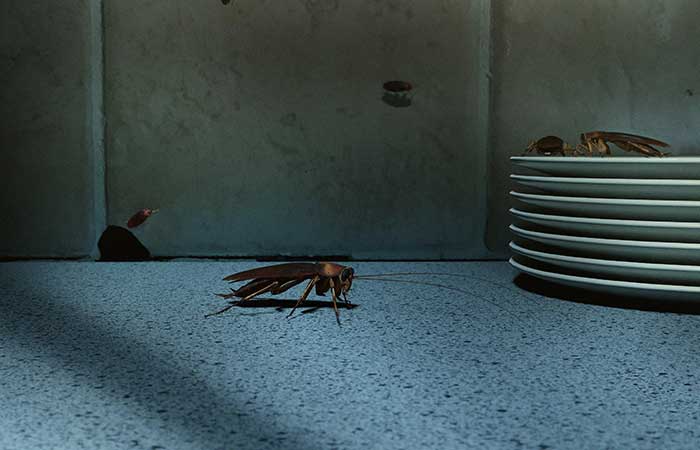
You should remove the dead cockroach immediately by placing a plastic bag over both your hands and scooping it up with the bag. You can also use tissues or paper towels to pick it up. Never use your bare hands to touch a cockroach.
After removal, clean the surrounding area thoroughly using a detergent.
Examine your home for nests and possible entry points such as cracks or holes in walls, and gaps in doors or windows. Always look inside, behind, and under every piece of furniture in the house, in particular the kitchen which is the most common plan for cockroaches to hide.
If you find a nest, be sure to not scare them away – this may make your task even more difficult. You may come across some live cockroaches, if so then it’s time to use some home remedies to kill roaches.
If the infestation is significant, it’s suggested to contact a pest control professional and leave the cockroach extermination to them.
Conclusion
Whilst it is common for cockroaches to play dead when they encounter a dangerous situation or feel threatened, there can be instances when a cockroach is immobilized and not purposely trying to trick you.
If they are affected by an insecticide or extremely cold weather, their bodies may be paralyzed and in a state that resembles a dead cockroach. There is a chance they could survive this, and soon be scurrying about your home again.
It is best to treat every cockroach carcass with caution and presume it is alive in some form, so it is advised to remove them whether they look dead or just playing around with you!



